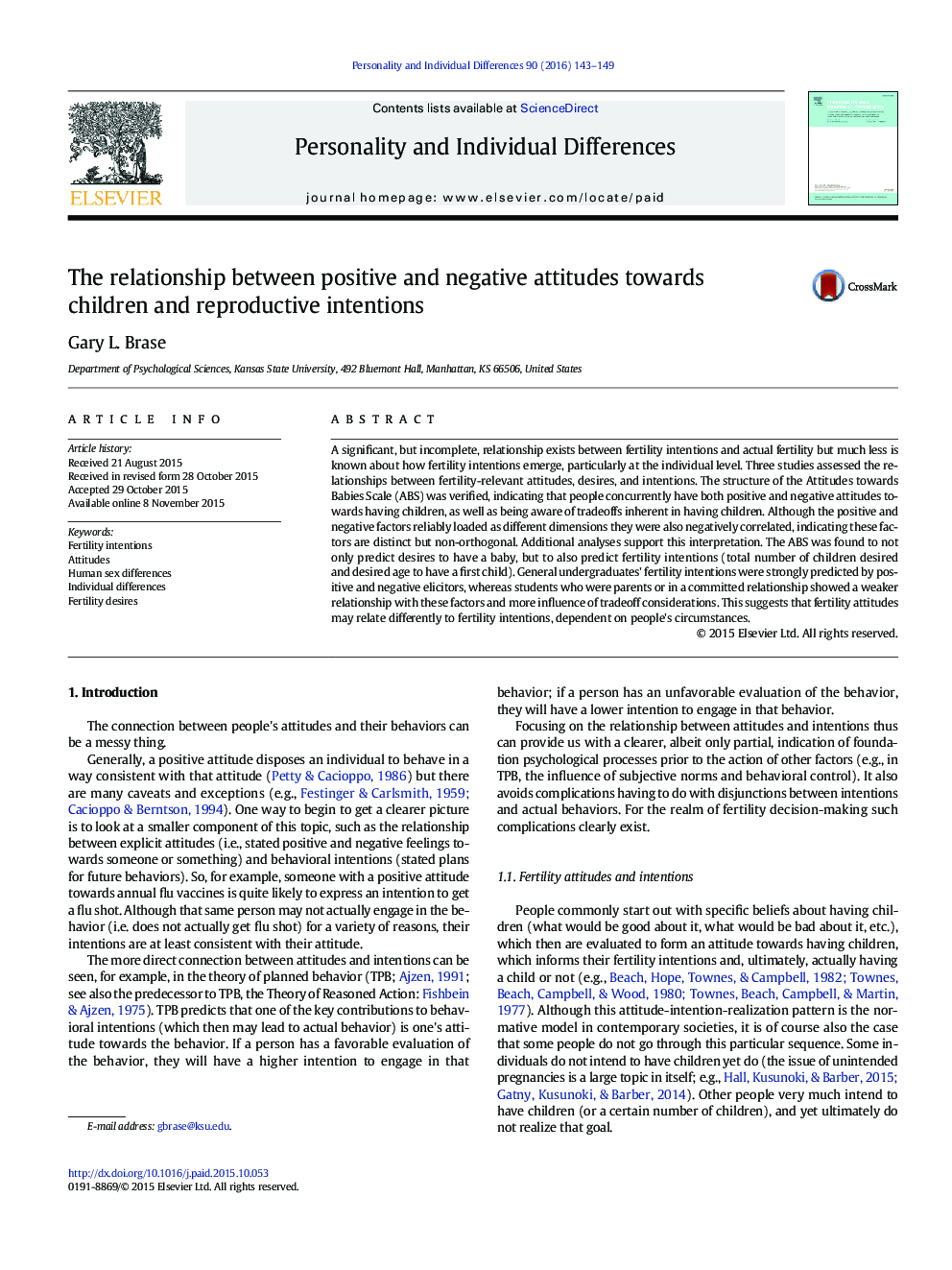| Article ID | Journal | Published Year | Pages | File Type |
|---|---|---|---|---|
| 889840 | Personality and Individual Differences | 2016 | 7 Pages |
•The relationships between fertility attitudes, desires, and intentions are unclear.•We found that people concurrently have positive and negative fertility attitudes.•These attitudes are distinct factors but also negatively correlated.•These attitudes predict both desires to have a baby and fertility intentions.•The predict ability of these factors varies for people in different life stages.
A significant, but incomplete, relationship exists between fertility intentions and actual fertility but much less is known about how fertility intentions emerge, particularly at the individual level. Three studies assessed the relationships between fertility-relevant attitudes, desires, and intentions. The structure of the Attitudes towards Babies Scale (ABS) was verified, indicating that people concurrently have both positive and negative attitudes towards having children, as well as being aware of tradeoffs inherent in having children. Although the positive and negative factors reliably loaded as different dimensions they were also negatively correlated, indicating these factors are distinct but non-orthogonal. Additional analyses support this interpretation. The ABS was found to not only predict desires to have a baby, but to also predict fertility intentions (total number of children desired and desired age to have a first child). General undergraduates' fertility intentions were strongly predicted by positive and negative elicitors, whereas students who were parents or in a committed relationship showed a weaker relationship with these factors and more influence of tradeoff considerations. This suggests that fertility attitudes may relate differently to fertility intentions, dependent on people's circumstances.
